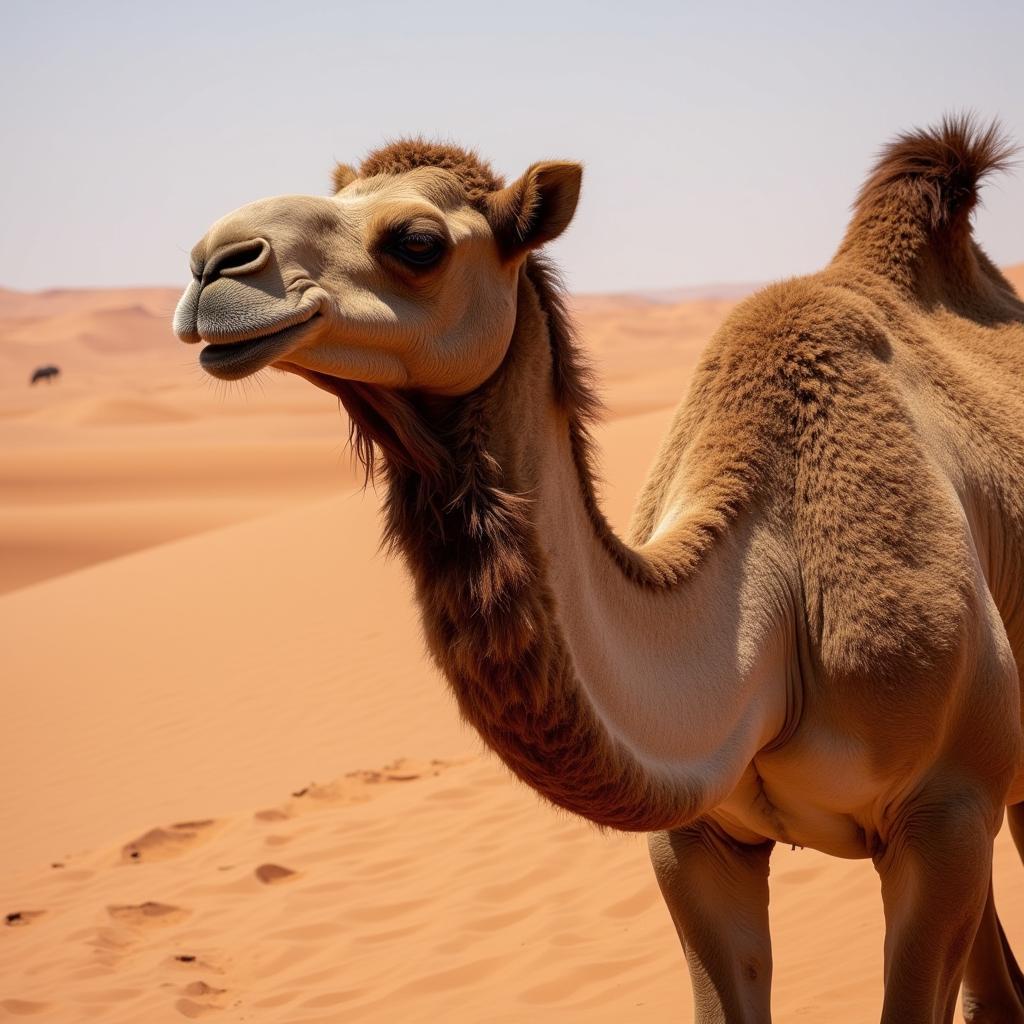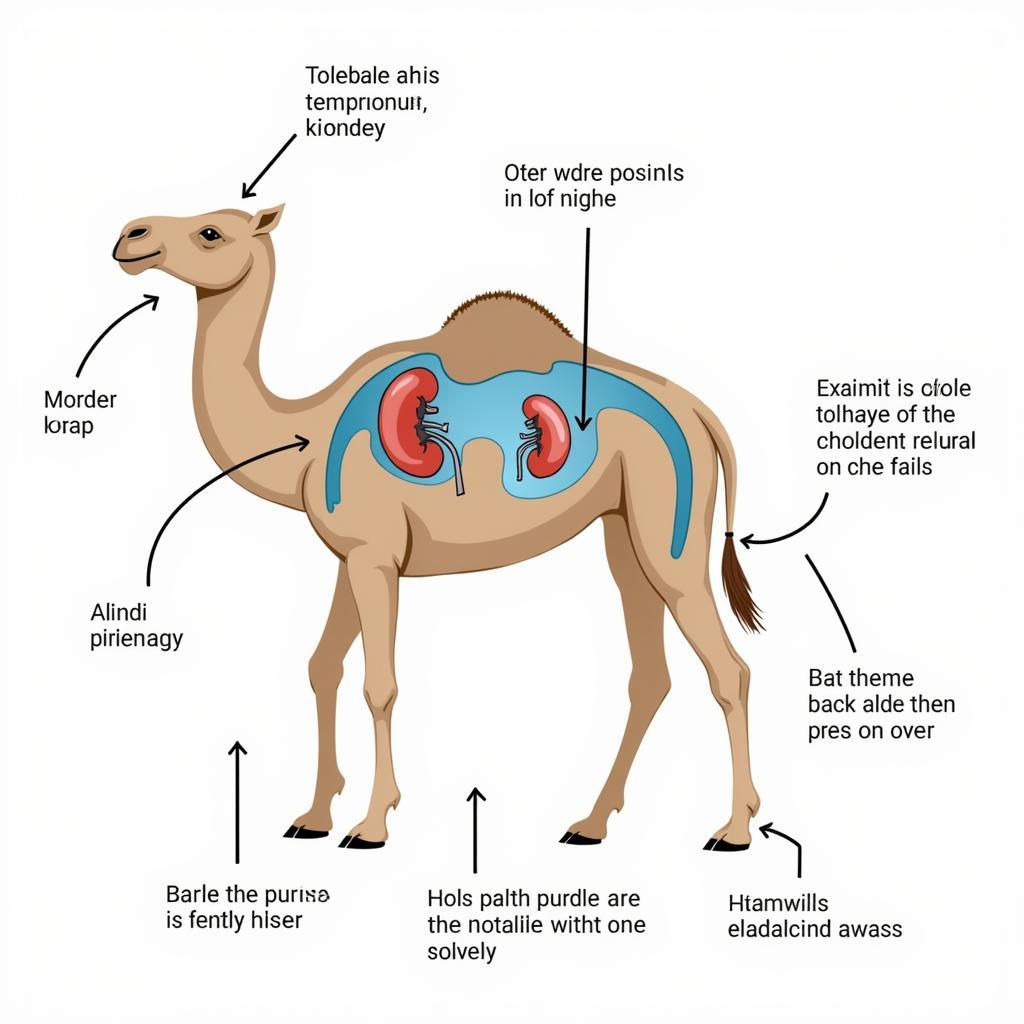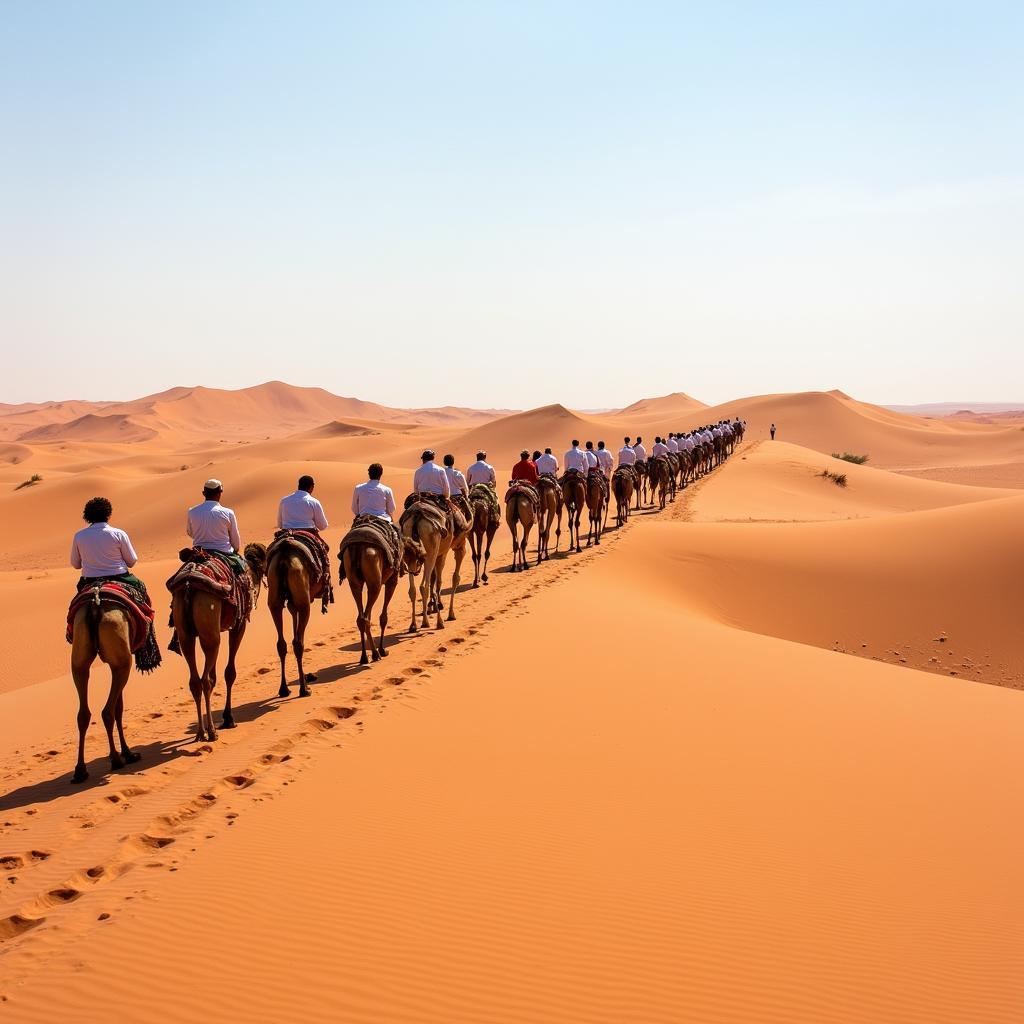African Camels and Their Humps: Unraveling the Mystery
African Camels And Their Humps are iconic symbols of the desert landscape. But what purpose do these humps actually serve? Contrary to popular belief, they don’t store water. They’re actually repositories of fat, a crucial energy reserve for these remarkable creatures enabling them to survive in harsh, arid environments. This adaptation is key to their survival in the challenging African deserts.
The Science Behind the Hump
The hump, a distinctive feature of African camels, primarily stores fat, not water. This fat reserve serves as a crucial energy source, allowing the camel to go for extended periods without food, sometimes for several weeks. When the fat is metabolized, it also releases water as a byproduct, contributing to the camel’s hydration. This fat storage is essential for their survival in the arid African deserts where food can be scarce. This efficient system allows African camels to thrive in some of the harshest environments on Earth. These adaptations make them perfectly suited for navigating the demanding terrains of the Sahara and other African deserts.
It’s important to understand the difference between the one-humped Dromedary camel and the two-humped Bactrian camel. While both have humps that serve the same purpose, the Dromedary is the camel typically found in Africa. The Bactrian camel, on the other hand, is native to Central Asia. Knowing this distinction helps us appreciate the specific adaptations of African camels.
 Dromedary camel in the Sahara Desert
Dromedary camel in the Sahara Desert
Why Fat Storage, Not Water?
Storing fat, rather than water, in the hump offers several advantages to African camels. Concentrating fat in one location helps regulate body temperature, preventing overheating in the scorching desert sun. If the fat were distributed throughout the body, it would act as insulation, trapping heat. This localized fat storage is a crucial adaptation for African desert wildlife.
The Dromedary Camel: King of the African Desert
The Dromedary camel, with its single hump, is uniquely adapted to the African environment. Its ability to tolerate extreme temperatures, combined with its efficient use of water and energy, makes it a true survivor. From the vast Sahara to the arid regions of East Africa, these remarkable animals play a vital role in the ecosystem and the lives of local communities.
How Do Camels Survive Without Water?
While the hump doesn’t store water directly, it contributes to the camel’s overall hydration. The metabolic breakdown of fat releases water, supplementing the water they drink. Additionally, camels have other remarkable adaptations that help them conserve water. They can tolerate significant fluctuations in body temperature, reducing the need to sweat. Their kidneys are highly efficient, producing concentrated urine. These adaptations, combined with the hump’s energy reserve, allow camels to survive long journeys across waterless landscapes. For more intriguing information on African camels, see African camels facts.
 African camel's adaptations for water conservation
African camel's adaptations for water conservation
The Cultural Significance of African Camels
Camels have been an integral part of African cultures for centuries. They serve as pack animals, a source of milk and meat, and even a symbol of status and wealth. In many communities, camels are essential for trade and transportation across the vast desert landscapes.
“Camels are more than just animals to us,” says Dr. Anika Nkosi, a cultural anthropologist specializing in East African pastoralist communities. “They are a lifeline, deeply interwoven with our traditions and livelihoods.” Their importance is undeniable, shaping the cultural tapestry of many African societies.
 African camel caravan crossing the Sahara Desert
African camel caravan crossing the Sahara Desert
Conclusion: Appreciating African Camels and Their Humps
African camels and their humps are fascinating examples of adaptation and resilience. The hump, a storehouse of fat, provides the energy needed to survive in challenging environments. Understanding the science and cultural significance of these animals allows us to appreciate their crucial role in the African ecosystem and the lives of those who depend on them. To learn more about other fascinating African mammals, check out African mammals.
FAQ
- What do African camels store in their humps? Fat, not water.
- How long can an African camel go without food? Several weeks, thanks to the fat reserves in their hump.
- What type of camel is found in Africa? The Dromedary camel, with one hump.
- Why is storing fat better than storing water in the hump? It helps regulate body temperature and provides a concentrated energy source.
- What is the cultural significance of camels in Africa? They are vital for transportation, trade, and livelihood, and are deeply ingrained in many cultures.
- What other adaptations do camels have for desert survival? Efficient kidneys, tolerance for temperature fluctuations, and the ability to extract water from fat metabolism.
- Where can I find more information about African animals and their habitats? You can explore more about african animals and their habitats ks1.
Common Scenarios and Questions
- Scenario: You’re planning a trip to the Sahara and wondering about the importance of camels. Question: How are camels adapted to survive in the desert?
- Scenario: You’re researching African wildlife and are curious about the Dromedary camel. Question: What’s the difference between a Dromedary and a Bactrian camel?
- Scenario: You’re studying the cultural impact of animals in Africa. Question: What role do camels play in African societies?
Further Exploration
You might also be interested in learning more about the african cow with hump.
Call to Action
For further assistance, please contact us via Phone: +255768904061, Email: [email protected] or visit our office located at Mbarali DC Mawindi, Kangaga, Tanzania. Our customer service team is available 24/7.



